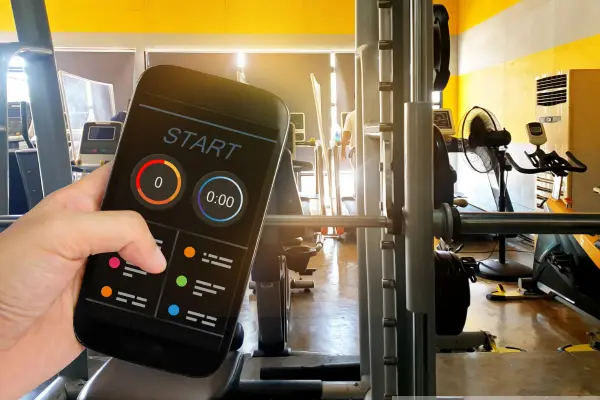Table of Contents
Introduction to Yoga and Pilates
Yoga and Pilates are popular practices that promote health and wellness. While both focus on the body and mind, they differ in their origins, techniques, and outcomes. Understanding these differences can help you choose the practice that best suits your needs. Whether you seek flexibility, strength, or relaxation, Yoga and Pilates offer unique benefits. This article will explore these two practices in detail, highlighting their distinct features and the advantages they bring to your life.
Origins and Philosophical Foundations
Yoga and Pilates have distinct origins and philosophies. Yoga, an ancient practice from India, is rooted in spiritual and physical discipline. It focuses on uniting the body, mind, and spirit. Key elements include breath control, meditation, and various postures. In contrast, Pilates was developed in the 20th century by Joseph Pilates. It emphasizes physical strength, flexibility, and posture. Pilates is more modern and secular, focusing on core stability and muscle control.
- Yoga: Ancient, spiritual, integrates breath and movement.
- Pilates: Modern, physical, emphasizes core strength and control.
Body Alignment and Posture
Both Yoga and Pilates prioritize body alignment and posture. However, they approach these goals differently. Yoga uses a variety of poses that stretch and strengthen muscles, promoting flexibility and balance. Postures in Yoga are often held for extended periods, encouraging deep muscle engagement and mindfulness. On the other hand, Pilates focuses on precise movements and controlled breathing to enhance core stability. This practice aims to align the spine and pelvis, improving overall posture.
- Yoga: Promotes flexibility, balance, and muscle engagement.
- Pilates: Focuses on core stability and precise movements.
Breathing Techniques and Mindfulness
Breathing is a vital aspect of both Yoga and Pilates, but the techniques vary. In Yoga, breath control, known as Pranayama, is integral to the practice. It enhances the connection between the body and mind, supporting relaxation and meditation. Yoga breathing techniques can reduce stress and increase energy levels. Pilates, however, incorporates a specific breathing technique that focuses on inhaling through the nose and exhaling through the mouth. This method supports core activation and helps maintain focus during exercises.
- Yoga: Pranayama breathing for relaxation and energy.
- Pilates: Breathing for core activation and focus.
Flexibility and Strength Development
Yoga and Pilates both contribute to flexibility and strength, but in different ways. Yoga’s wide range of poses enhances flexibility by stretching various muscle groups. It also builds strength, particularly in holding challenging postures. Yoga often focuses on the entire body, creating a balanced strength profile. Pilates, however, concentrates on developing core strength. Exercises target the deep abdominal muscles, lower back, and pelvis, building a strong and stable foundation.
- Yoga: Enhances overall flexibility and strength.
- Pilates: Focuses on core strength and stability.
Mental Health and Stress Relief
Mental health benefits are significant in both Yoga and Pilates. Yoga’s meditative elements and emphasis on breath work make it highly effective for stress relief. It encourages a calm and centered mind, reducing anxiety and promoting mental clarity. Yoga is often used as a tool for mindfulness and relaxation. Pilates also contributes to mental well-being but through a different pathway. The focus on controlled movements and breathing in Pilates fosters concentration and mental discipline. This can reduce stress and improve cognitive function.
- Yoga: Promotes relaxation, reduces anxiety, and supports mindfulness.
- Pilates: Enhances mental focus, reduces stress, and boosts cognitive function.
Weight Management and Body Toning
Yoga and Pilates can both aid in weight management and body toning. Yoga, depending on the style, can be a moderate to intense workout that burns calories while toning muscles. Power Yoga, in particular, is effective for weight loss. The variety in Yoga poses also helps sculpt the body, improving muscle definition. Pilates, with its focus on controlled movements, tones the body, particularly the core, and improves overall muscle balance. While not as calorie-intensive as some forms of Yoga, Pilates is excellent for achieving a lean and toned physique.
- Yoga: Can be high-intensity, supports weight loss and muscle toning.
- Pilates: Tones muscles, especially the core, and enhances muscle balance.
Injury Prevention and Rehabilitation
Both Yoga and Pilates are beneficial for injury prevention and rehabilitation. Yoga’s emphasis on flexibility and balance helps prevent injuries by keeping muscles and joints supple. It also aids in recovery by promoting circulation and reducing inflammation. Restorative Yoga is particularly useful for healing. Pilates, however, is often used in rehabilitation settings due to its focus on core strength and alignment. It’s effective for recovering from back pain, improving posture, and preventing further injuries.
- Yoga: Prevents injuries through flexibility and balance.
- Pilates: Ideal for rehabilitation, especially for back pain and posture.
Suitability for Different Fitness Levels
Yoga and Pilates cater to various fitness levels, making them accessible to many people. Yoga offers a broad spectrum of styles, from gentle Hatha Yoga to intense Ashtanga Yoga, allowing practitioners to choose based on their fitness level and goals. Beginners can start with basic poses and progress over time. Pilates is equally adaptable, with exercises ranging from beginner to advanced. It is particularly well-suited for those looking to build core strength and improve posture without high-impact movements.
- Yoga: Offers styles for all fitness levels, from gentle to intense.
- Pilates: Adaptable exercises, ideal for building strength and posture.
Conclusion
In conclusion, Yoga and Pilates each offer unique benefits that cater to different needs and preferences. While Yoga provides a more holistic approach, combining physical postures, breath control, and meditation, Pilates focuses on building core strength, improving posture, and enhancing mental focus. Both practices contribute significantly to physical and mental well-being, making them valuable additions to any wellness routine. Whether you are seeking relaxation, flexibility, strength, or mental clarity, Yoga and Pilates can help you achieve your goals.










